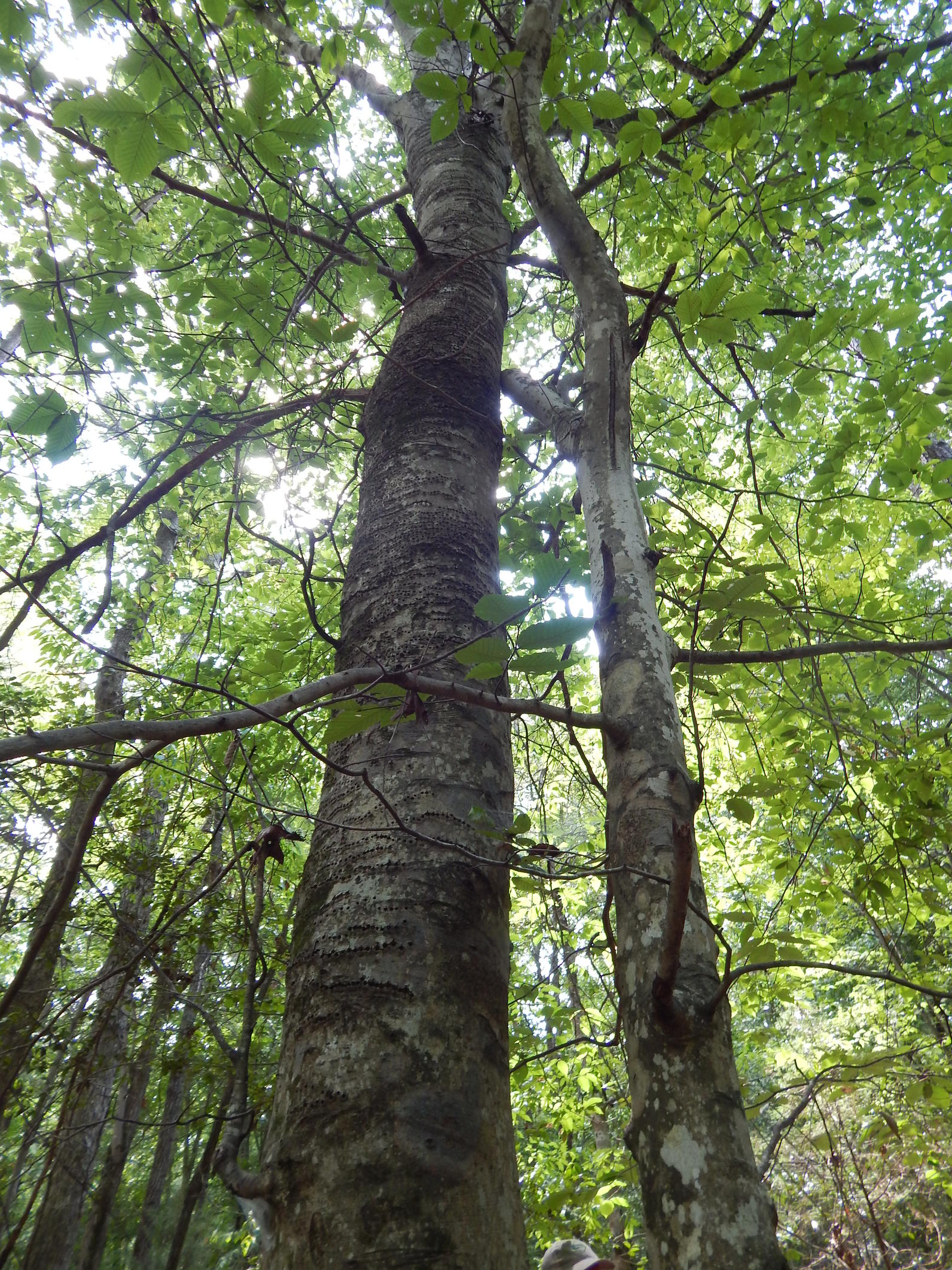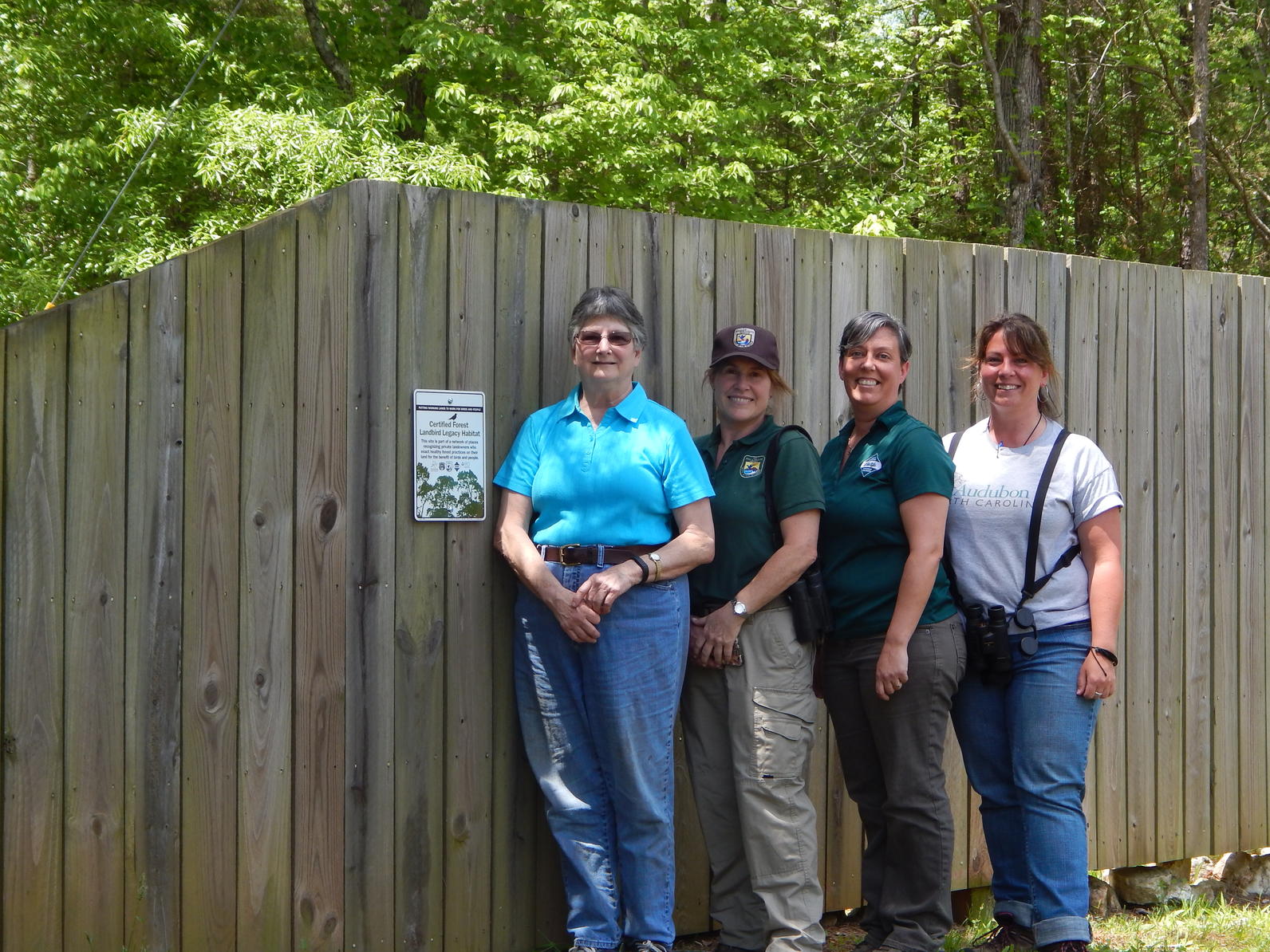Audubon North Carolina's Working Lands program represents the future of the Atlantic Flyway's priority bird species. In North Carolina, 80% of the land is privately-owned: if Audubon can inform bird stewardship practices on just 1% of these lands, we have the ability to positively affect more than 300,000 acres!
In this series, we profile local landowners to share all the amazing and exciting ways various properties can be enhanced to support struggling populations of priority bird species.
“While the city is lovely, I’m convinced that biodiversity is the key to our success as human beings,” says Dr. Katherine Dunlap of Star, North Carolina.
After purchasing a piece of land that had been in her family for many years, Dr. Dunlap and her husband made the move from Charlotte to find peace in nature and in retirement.
“My grandfather had eight girls and then my dad, he was the last one” she explains. “He and my grandmother bought the property in 1892, and it has been a gathering place for family ever since. My father and his sisters would get together at ‘the old home place’ as they called it, and my family would come up every summer to catch fireflies, run around, and eat and eat and eat!”

When they first settled in, Dr. Dunlap and her husband would sit on the back porch and listen to the Barred Owls and Whip-poor-wills and wonder: “Who else is out there making all those sounds?” The diversity of life in the woods surrounding their house piqued Dr. Dunlap’s interest, and after her husband passed away, she determined to ensure the property would always support the incredible birds, animals, and plant diversity that made it so special.
To start, Dr. Dunlap established a conservation easement for the property through the Land Trust for Central North Carolina.
Next, she contacted Technical Assistance Biologist John Isenhour of North Carolina Wildlife Resources Commission, who came out to assess the landscape. John recommended Audubon North Carolina’s Forest Landbird Legacy Program to guide and support Dr. Dunlap around land management and habitat restoration.
“The property was selectively timbered in 1954,” tells Dr. Dunlap, “and they took out the big hardwood. At some point, parts were farmed. It then grew wild for 60 years, so the canopy was thick but not necessarily healthy. It wasn’t a very ‘fertile’ living place for creatures.’”
Audubon North Carolina along with partners NC Wildlifelife Resources Commission and the US Fish and Wildlife Service worked with Dr. Dunlap to clear six one-acre plots of the canopy – none of the felled trees were removed, to nourish new life like wild blueberries, plums, blackberries, and other wild food for animals, and to provide course woody material on the forest floor.

Snags were created from 22 trees to provide suitable locations for woodpeckers and other species to create cavities for nesting and roosting. Overall, Dr. Dunlap was informed, she could see new birds including the Yellow-billed Cuckoo, Yellow-bellied Sapsucker, Brown-headed Nuthatch, Scarlet Tanager, Hooded Warbler, Wood Thrush, Northern Flicker, Whip-poor-will, Chuck-will’s-widow, Louisiana Waterthrush, and Acadian Flycatcher.
On May 4, Dr. Dunlap was officially recognized for her participation in the Forest Landbird Legacy Program. That morning, 36 species of birds were found on the property including a Kentucky Warbler, Chuck-will’s-widow, Yellow-billed Cuckoo, Acadian Flycatcher, Northern Parula, Red-shouldered Hawk, four species of Vireos, and two species of Tanagers. The area is also of great importance to bats, whose activity will also be monitored moving forward!

Dr. Dunlap is happy with the results already. “I learned so much through this process!” says Dr. Dunlap proudly, “There are so many kinds of species of birds living all around me that I never noticed.”
If you’re a landowner interested in accessing funding to support environmentally sound practices- especially those that benefit birds- get in touch by emailing atomcho@audubon.org.






